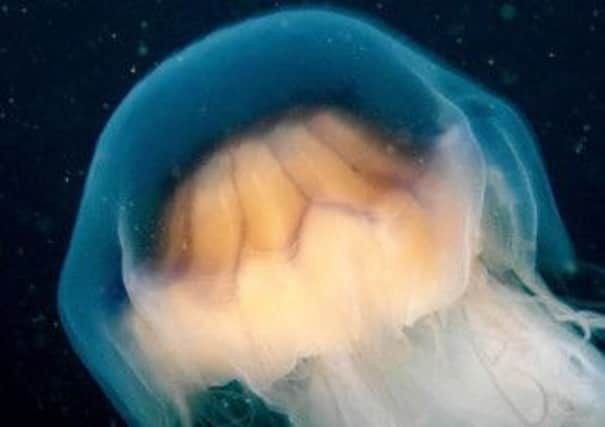Invasion of the killer jellyfish hits Scotland


The Marine Conservation Society (MCS) said they had received reports around the country, including of the Lion’s Mane jellyfish. It is the world’s largest-known species, reaching more than 6ft in diameter in some cases, and its sting can prove fatal in the elderly or those with underlying health problems.
A scaffolder working at Mingarry Castle, near Kilchoan in Lochaber, reported seeing a Lion’s Mane the size of a car bonnet recently.
Advertisement
Hide AdAdvertisement
Hide AdSeveral other recent sightings of the orange and red creatures – which can grow tentacles up to 120ft long – have been recorded by kayakers at Ardnamurchan, and another at Arisaig.
Large numbers of Lion’s Mane have been also been observed in past weeks in Carradale Bay, Argyll, and Ullapool and Portmahomack in the Highlands.
The upsurge in jellyfish – Lion’s Mane and Moon species being the most common – is thought to have its origins in the late cold snap this year, which kept numbers low by minimising conditions the creatures need to thrive. But the rapid rise in temperatures in July brought about a plankton boom, the main food for jellyfish, and populations exploded to take advantage of the bonanza.
Jellyfish will gather in huge numbers if food is plentiful and the sea currents are not strong enough to scatter them.
The MCS runs a survey each year to monitor their numbers, and has had reports of recent significant blooms at Rothesay, Argyll, Lochbroom, near Ullapool, Maidenhead Bay and Culzean Bay in Ayrshire, and Strathlene Beach near Buckie.
MCS biodiversity programme manager and jellyfish expert Dr Peter Richardson said their populations should be considered an important indicator of the health of the seas.
He added: “The scarcity of jellyfish reports before June was unusual and could well be linked to the exceptionally cold spring. However, as our waters warmed, sightings of jellyfish increased, with Moon jellyfish reported in large numbers around the UK.”
Professor Andrew Brierley, of the Scottish Oceans Institute at the University of St Andrews, said that jellyfish should be given a wide berth if spotted in the sea or on the shore.
Advertisement
Hide AdAdvertisement
Hide AdHe said: “Moon jellyfish are more or less harmless, but Lion’s Mane have a nasty sting. The problem is that they have very long tentacles, and it’s easy to swim inadvertently through tentacles without being aware that the jellyfish is there.
“The abundance changes from year to year. Baby jellyfish hatch in the early spring and grow rapidly in summer to these big adults.”
NHS24 medical director, Professor George Crooks, warned that anyone brave enough to venture into the sea off Scotland’s coastline should be prepared and seek advice on dealing with marine life stings from the Health Library at www.nhsinform.co.uk. He said: “Jellyfish tentacles are covered with small poisonous sacs called nematocysts which, if touched, produce a nasty sting.
“If you are unfortunate enough to be stung, the most important thing to remember is not to rinse the wound in fresh water and not to rub it or apply ice – even if the area feels hot.
“You should try to soak the affected area in vinegar for 15-30 minutes and if vinegar is not available, alcohol or seawater.”Professor Crooks added: “If you are walking along the beach, be careful not to touch jellyfish that have been washed on to the shore. They can still be poisonous so try to keep curious kids and dogs away from them.”